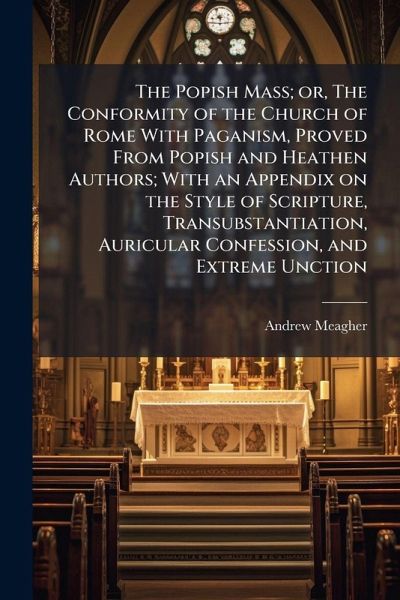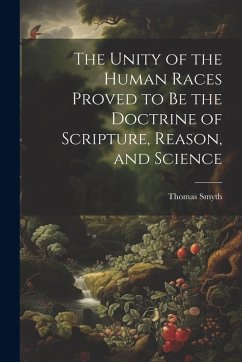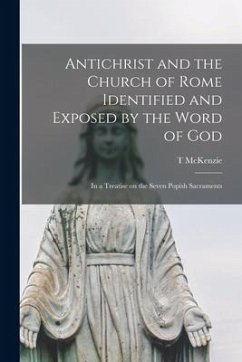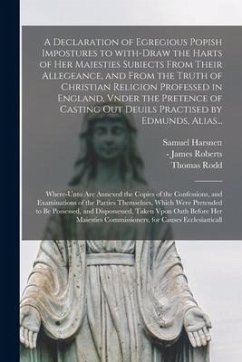
The Popish Mass; or, The Conformity of the Church of Rome With Paganism, Proved From Popish and Heathen Authors; With an Appendix on the Style of Scripture, Transubstantiation, Auricular Confession, and Extreme Unction
Versandkostenfrei!
Versandfertig in über 4 Wochen
20,99 €
inkl. MwSt.
Weitere Ausgaben:

PAYBACK Punkte
10 °P sammeln!
In "The Popish Mass," Andrew Meagher argues the controversial thesis that the Catholic Mass bears striking resemblances to ancient pagan rituals. Drawing from both Catholic and pagan texts, Meagher meticulously presents his case, challenging the perceived uniqueness of Catholic traditions. This edition includes an appendix that discusses the style of Scripture, transubstantiation, auricular confession, and extreme unction, offering additional layers to Meagher's central argument. Originally published in 1823, this work provides a fascinating glimpse into the religious debates of the early 19th...
In "The Popish Mass," Andrew Meagher argues the controversial thesis that the Catholic Mass bears striking resemblances to ancient pagan rituals. Drawing from both Catholic and pagan texts, Meagher meticulously presents his case, challenging the perceived uniqueness of Catholic traditions. This edition includes an appendix that discusses the style of Scripture, transubstantiation, auricular confession, and extreme unction, offering additional layers to Meagher's central argument. Originally published in 1823, this work provides a fascinating glimpse into the religious debates of the early 19th century. It remains a valuable resource for those interested in the history of religious thought, comparative religion, and the ongoing dialogue between faith and reason. Meagher's detailed analysis invites readers to consider the historical and cultural influences that have shaped religious practices. This work has been selected by scholars as being culturally important, and is part of the knowledge base of civilization as we know it. This work was reproduced from the original artifact, and remains as true to the original work as possible. Therefore, you will see the original copyright references, library stamps (as most of these works have been housed in our most important libraries around the world), and other notations in the work. This work is in the public domain in the United States of America, and possibly other nations. Within the United States, you may freely copy and distribute this work, as no entity (individual or corporate) has a copyright on the body of the work. As a reproduction of a historical artifact, this work may contain missing or blurred pages, poor pictures, errant marks, etc. Scholars believe, and we concur, that this work is important enough to be preserved, reproduced, and made generally available to the public. We appreciate your support of the preservation process, and thank you for being an important part of keeping this knowledge alive and relevant.










![Orders in Council, or, An Examination of the Justice, Legality, and Policy of the New System of Commercial Regulations [microform]: With an Appendix o Cover Orders in Council, or, An Examination of the Justice, Legality, and Policy of the New System of Commercial Regulations [microform]: With an Appendix o](https://bilder.buecher.de/produkte/65/65489/65489439n.jpg)

